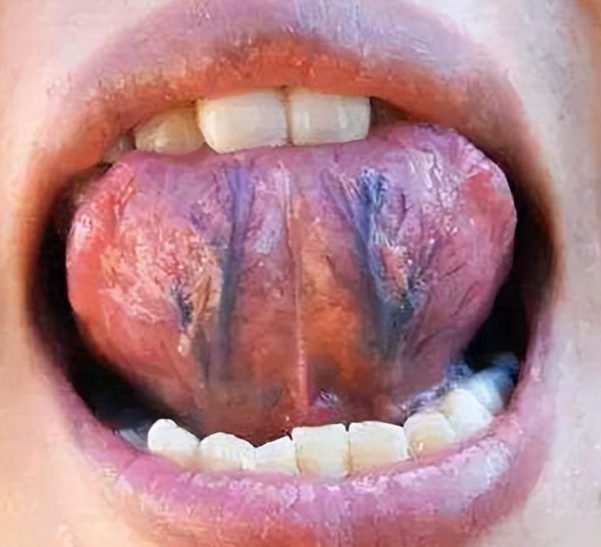
You’re in the bathroom, brushing your teeth or maybe giving a hearty laugh in the mirror, when you catch a glimpse of the underside of your tongue. And there it is—a dark, purplish vein snaking its way across the delicate pink landscape. It’s something you’ve probably never noticed before, and its sudden appearance can be a little alarming.
Before your imagination runs away with you, take a deep breath. In the vast majority of cases, that purple vein is not a new development. It’s likely been there your entire life. What’s new is that you’ve just noticed it, perhaps for the first time. And that act of noticing is your body’s way of inviting you to understand a little more about your own intricate anatomy.
Meet the Lingual Vein: Your Tongue’s Home Highway
What you’re looking at is your lingual vein. Think of it as the main return pipeline for blood that has been delivered to your tongue. The tongue is an incredibly active muscle, essential for speech, taste, and swallowing, and it requires a rich blood supply. After the blood delivers its oxygen and nutrients, it needs to get back to the heart and lungs, and it does so through this very visible vein.
The reason it looks so prominent and purple is simple: it’s carrying deoxygenated blood back toward your heart, and the thin, translucent membrane under your tongue allows you to see it clearly. In many ways, it’s no different from the veins you can see on the back of your hands; it just seems more dramatic because of its location and color.
When It’s Perfectly Normal:
- It’s symmetrical (you likely have one on either side).
- It’s soft and flat to the touch.
- It doesn’t hurt, throb, or cause any discomfort.
- You’ve just never paid this close attention to the underside of your tongue before.
When to Pay Closer Attention: The Body’s Subtle Signals
While usually harmless, there are times when changes in the veins under your tongue can be your body’s way of waving a gentle flag. It’s less about the vein itself and more about what it might reflect about your overall circulatory health.
- The Pressure Gauge: If you were to notice that these veins, or others in your mouth, seem more prominent, swollen, or “full” than usual, it could be a sign of increased pressure in your venous system. This is something to mention to your doctor, as it can sometimes be related to conditions like high blood pressure or, more rarely, issues with blood flow from the head and neck back to the heart.
- The Hydration Report: When you’re dehydrated, your blood volume decreases and your blood pressure can drop slightly. This can sometimes make veins appear less plump and more prominent. If you’re noticing the vein more and also feeling thirsty, fatigued, or experiencing dry mouth, it’s a clear signal to significantly increase your water intake.
- The Ageing Canvas: As we get older, our skin and the mucous membranes in our mouth naturally become thinner and lose some elasticity. This can make underlying structures—like veins—more visible and apparent than they were in our youth. It’s a normal part of the aging process, similar to how veins on the hands and arms become more noticeable.
The Red Flags (What to Actually Worry About)
It is exceedingly rare for a vein itself under the tongue to be a serious problem. However, you should certainly schedule a visit with your doctor or dentist if you notice any of the following in addition to the vein:
- A lump, bump, or sore that persists for more than two weeks.
- A sudden, drastic change in the size, color, or shape of the vein, especially if it becomes hard, rope-like, or painful.
- Swelling that makes it difficult to speak or swallow.
- Any purple or dark patches that are not clearly a linear vein.
For most of us, that purple vein under the tongue is simply a part of our body’s beautiful and functional blueprint. It’s a reminder of the complex network of life that flows just beneath the surface. So, the next time you see it, don’t be concerned. See it for what it is: a testament to the vibrant, active life of your tongue, faithfully carrying out its duties, meal after meal, word after word, and laugh after laugh.